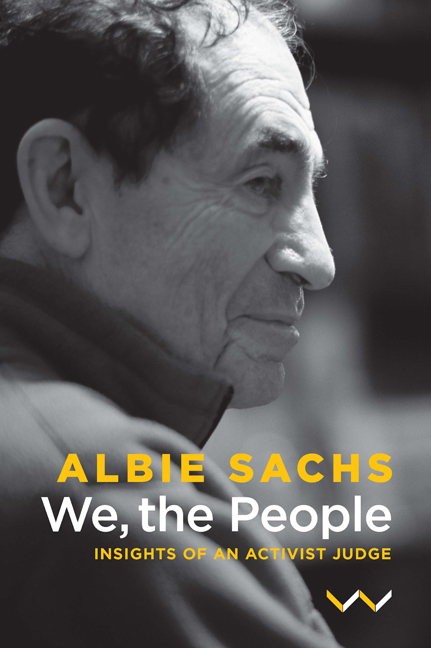Book contents
- Frontmatter
- Acknowledgements
- Miscellaneous Frontmatter
- Contents
- Figures
- Introduction
- 1 In the Beginning
- 2 Hope and Caution in Exile
- 3 We Have to Mistrust Ourselves
- 4 Inventing A Constitution
- 5 With Clean Hands and Without Secrets
- 6 Reconciling the Past and the Future
- 7 Living Constitutional Law and Ubuntu
- 8 More than Crumbs from the Table: Enforcing Social and Economic Rights
- 9 Struggle Continues
- 10 Are the Beautiful People Born?
- Cases Cited
- Sources
- Index
- Frontmatter
- Acknowledgements
- Miscellaneous Frontmatter
- Contents
- Figures
- Introduction
- 1 In the Beginning
- 2 Hope and Caution in Exile
- 3 We Have to Mistrust Ourselves
- 4 Inventing A Constitution
- 5 With Clean Hands and Without Secrets
- 6 Reconciling the Past and the Future
- 7 Living Constitutional Law and Ubuntu
- 8 More than Crumbs from the Table: Enforcing Social and Economic Rights
- 9 Struggle Continues
- 10 Are the Beautiful People Born?
- Cases Cited
- Sources
- Index
Summary
If we did a paternity or maternity test on the South African Constitution, whose DNA do you think would come up? It's no one in this room, although there are people here who made a major contribution. Nor is it Nelson Mandela. The answer is: Oliver Tambo.
I recall a moment in March 1988 when I was walking to the microphone in a room in Lusaka about a tenth of the size of this one. My topic was a Bill of Rights in a democratic South Africa. And my heart was going boom, boom, boom.
Oliver Tambo had set up the ANC Constitutional Committee which had organised a workshop to discuss a document we had prepared, titled Constitutional Guidelines. For years our legal skills had been used to denounce apartheid. A typical paper I had written had shown how every single article in the Universal Declaration of Human Rights was being violated in South Africa (with one exception, I should add – try as I might, I couldn't show that apartheid denied rights to intellectual property!) Now we were moving our focus from what we wished to destroy, to what we were determined to build. It was thrilling to work as part of a team with the quiet, thoughtful, principled and open-minded Oliver Tambo at the helm. My function at the workshop was to explain what a Bill of Rights was and why we needed one in South Africa.
About forty people were looking expectantly at me. Some might have been there directly from the underground at home, but most were comrades living in exile, a couple from the MK military camps, others from various political structures. I had three arguments, and my heart was racing. How would these comrades at the heart of the struggle, many risking their lives on a daily basis, take my reasoning?
The first argument, the diplomatic one, was easy. Being seen to support a Bill of Rights would put the ANC in a positive light. It would tell people, ourselves, the world, that we were not power-hungry terrorists waiting to seize power, to get revenge. On the contrary, it supported the idea that we were aiming to achieve a free, democratic and law-governed South Africa. The delegates nodded their agreement, no problem.
- Type
- Chapter
- Information
- We, the PeopleInsights of an Activist Judge, pp. 7 - 18Publisher: Wits University PressPrint publication year: 2016



